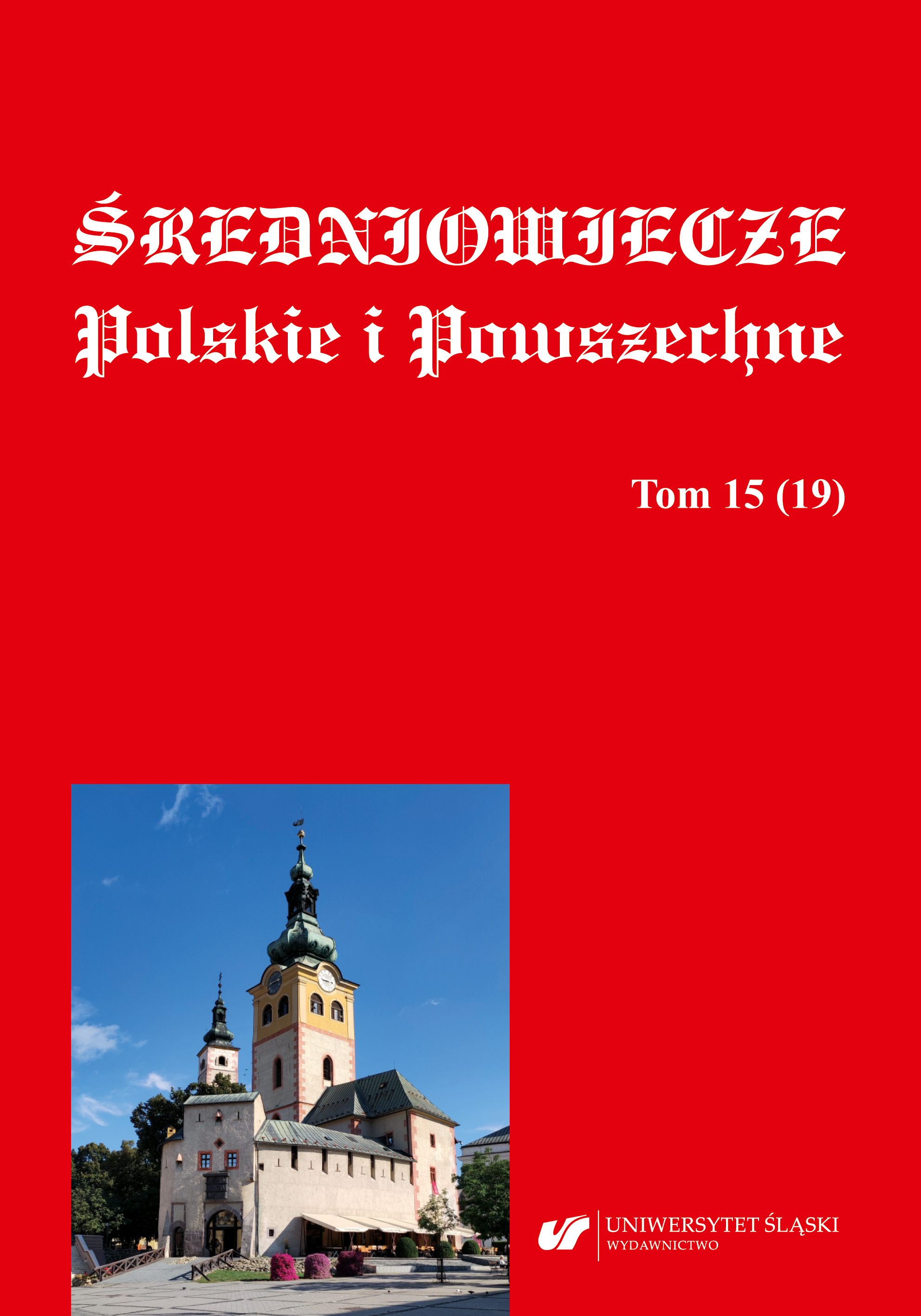Nieznany list arcybiskupa gnieźnieńskiego Bodzanty z Kosowic herbu Szeliga z 24 września 1387 roku
An Unknown Letter of the Archbishop of Gniezno, Bodzanta of Kosowice, of the Szeliga Coat of Arms, Dated September 24, 1387
Author(s): Michał HankusSubject(s): Christian Theology and Religion, History, Cultural history, History of Church(es), Diplomatic history, Economic history, Political history, 13th to 14th Centuries
Published by: Wydawnictwo Uniwersytetu Śląskiego
Keywords: archbishop Bodzanta; Władysław Opolczyk; excommunication; Wieluń; interdict; taxes; Church
Summary/Abstract: The Archbishop of Gniezno, Bodzanta of Kosowice, of the Szeliga coat of arms, is one of the most controversial figures of late fourteenth-century Poland. He began his career as the governor of Kraków-Sandomierz during the reign of Casimir the Great. He held this office for over 20 years, while also developing his career as a clergyman. His service as a canon in Kraków, a scholastic in Wiślica and finally as provost of the collegiate church of St. Florian in Kleparz were successful. In 1382, by the appointment of king Louis of Hungary, he became the archbishopric of Gniezno, where he remained until his death in 1388. The controversy surrounding Bodzanta stems from his unstable policy during the interregnum following the death of Louis of Hungary. In addition, Jan of Czarnków left in his chronicle an unfavourable opinion about the archbishop, representing him as incompetent and his actions as destructive for the Polish Church. The aim of this article is to highlight the conflict between Bodzanta of Kosowice and prince Władysław Opolczyk, which took place in 1387. The analysis is based on a newly discovered letter of the archbishop to parish priests in the Wieluń region, found in the collections of the Jagiellonian Library. The conflict was caused by the receipt by the prince’s officials of questionable benefits from villages belonging to the clergy of that region. The archbishop defended the local clergy, imposing an interdict on Wieluń and threatening the ruler with excommunication. This study fills a gap related to relations between the most important personages in the Kingdom of Poland at the end of the fourteenth century. In addition, it verifies the state of research on the history of such towns as Krzywarzeka. The attitude and determination of the archbishop in curbing the prince’s decisions and actions contradicts the opinion about Bodzanta’s weakness throughout his pontificate.
Journal: Średniowiecze Polskie i Powszechne
- Issue Year: 15/2023
- Issue No: 19
- Page Range: 99-109
- Page Count: 11
- Language: Polish

